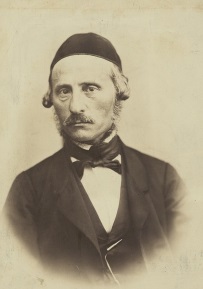|
Dov Ber Nathanson
Bernhard Nathanson (22 April 1832 – 2 February 1916), born David Ber Nathanson or Dov Ber Nathanson (, ), was a Jewish Russian Hebrew journalist and author. He was the biographer and publisher of the writings of Isaac Baer Levinsohn. Biography Bernhard Nathanson was born to a wealthy Jewish family in Satanov, Podolia. He his early Hebrew education under Yosef Tzvi Polichinetzki and then under the supervision of his own father, and received rabbinical ordination in 1850. Under the influence of the Haskalah, Nathanson went to Odessa after his father's death in 1853, where he devoted himself to both Jewish and secular studies. There he co-operated with Jacob Israel Levinsohn, the nephew of Isaac Baer Levinsohn, in copying and revising the latter's manuscripts. Nathanson was occupied for three years on Levinsohn's ''Aḥiyah ha-Shiloni ha-Ḥozeh'' and ''Zrubavel''. From 1871 to 1875 Nathanson lived in various places in Bessarabia, settling in Warsaw in 1875 in connection with ... [...More Info...] [...Related Items...] OR: [Wikipedia] [Google] [Baidu] |
Sataniv
Sataniv (; ; ; ) is a rural settlement in Khmelnytskyi Raion, Khmelnytskyi Oblast, Ukraine. It hosts the administration of Sataniv settlement hromada, one of the hromadas of Ukraine. Population: History Known in historical documents since 1404, Sataniv was part of the Grand Duchy of Lithuania, Polish–Lithuanian Commonwealth, Ottoman Empire, Russian Empire, Ukrainian People's Republic, Soviet Union, and after the latter's dissolution, became part of independent Ukraine. The town over the Zbruch River and its surroundings have been the scene of military actions during the Khmelnytsky Uprising, World War I, Ukrainian War of Independence, and World War II. As noted by Kateryna Lypa, "the history of Sataniv is typical of a small border town-fortress, where periods of terrible destruction alternated with periods of prosperity, flourishing in trade and crafts". Sataniv was a village, a town, a city, then a town again, and in 1938, it acquired the status of an urban-type settlement. ... [...More Info...] [...Related Items...] OR: [Wikipedia] [Google] [Baidu] |
Hamagid
''Hamagid'' (; ), also known after 1893 as ''Hamagid LeIsrael'' (), was the first Hebrew language weekly newspaper. It featured mostly current events, feature articles, a section on Judaic studies, and, in its heyday, discussions of social issues. Published between 1856 and 1903, it first appeared in Lyck, East Prussia and targeted Russian Jews, but was soon redistributed all over Europe and the Jewish world. Although it only had a peak circulation of 1,800 copies, it's primarily remembered as beginning the modern day Hebrew language press. It is hard to estimate its true readership, as in its era one copy would pass through many hands. ''Hamagid'' carried global and Jewish news in Hebrew, either translated, or as original reporting. It was also the first newspaper to publish op-eds in Hebrew. The founder and first editor of ''Hamagid'' was Eliezer Lipman Zilbermann (1819 – 1882). He is credited with bringing the social issue of the '' agunot'' to the forefront of reader's m ... [...More Info...] [...Related Items...] OR: [Wikipedia] [Google] [Baidu] |
19th-century Biographers From The Russian Empire
The 19th century began on 1 January 1801 (represented by the Roman numerals MDCCCI), and ended on 31 December 1900 (MCM). It was the 9th century of the 2nd millennium. It was characterized by vast social upheaval. Slavery was Abolitionism, abolished in much of Europe and the Americas. The First Industrial Revolution, though it began in the late 18th century, expanded beyond its British homeland for the first time during the 19th century, particularly remaking the economies and societies of the Low Countries, France, the Rhineland, Northern Italy, and the Northeastern United States. A few decades later, the Second Industrial Revolution led to ever more massive urbanization and much higher levels of productivity, profit, and prosperity, a pattern that continued into the 20th century. The Catholic Church, in response to the growing influence and power of modernism, secularism and materialism, formed the First Vatican Council in the late 19th century to deal with such problems an ... [...More Info...] [...Related Items...] OR: [Wikipedia] [Google] [Baidu] |


